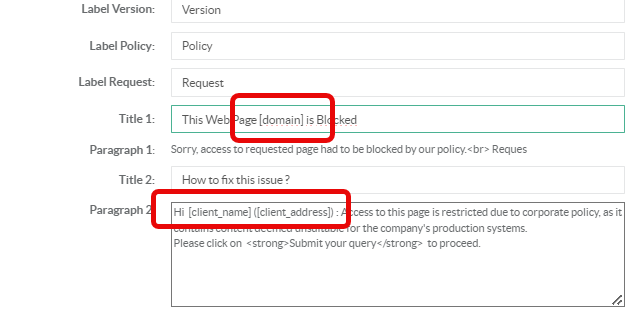Replaces specific signatures with dynamic content from the error-page service.
This feature is available on Artica v4.50 Service Pack 5 or Artica v4.50 Service Pack 4 Hotfix 20250814-17
Here are the tokens you can use and their mappings.
| [acl_id] | If the blocked operation came from a Proxy ACLs |
| [category_name] | Name of the category of the requested website |
| [category_source] | Unique ID of the category |
| [client_address] | IP address of the client |
| [client_name] | Name of the user account ( if proxy authentication enabled) |
| [client_user] | Field to determine the client ( User account if exists, MAC address if exists or IP Address) |
| [domain] | Internet domain name of the blocked request. ( the full url is not added because it can be a very long URL ) |
| [real_ip] | if the request to the web page service using a reverse-proxy or a proxy, the web page service try to determine the real IP address |
| [rule_id] | The web error page rule id |
| [rule_name] | The Web filtering rule name ( if exists ) |
| [source_url] | it is the referer url of the request |
| [target_group] | The category unique number that matches the web-filtering rule. |
¶ How to use these tokens ?
In the skin section, you can use these token in any text, it will be replaced by the mapping

¶ Building URLs
If you need to create link with parameters, some information needs to be encoded for url string, in this case, use <TOKEN> character.
For example :
<a href="http://myWebapp.app?submit=yes&domain=<domain>&user=<client_name>&ip=<real_ip>">Click here</a> to complains about the blocked [domain] domain.